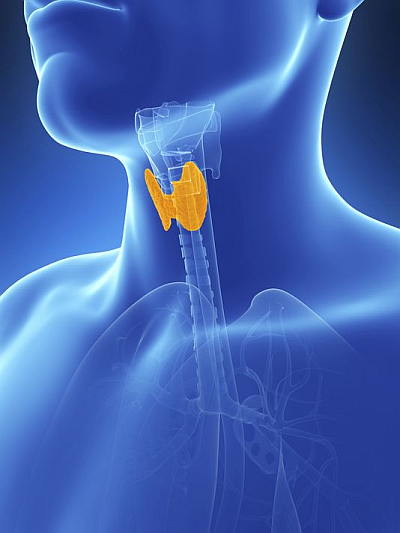Former first lady Barbara Bush and actor Marty Feldman, who played “Igor” in the film “Young Frankenstein,” have symptoms associated with thyroid eye disease.
 Thyroid is a butterfly-shaped gland in the neck producing hormones that regulate the rate at which many body systems function as well as their rate of growth. An autoimmune disorder known as Graves’ disease mistakenly triggers the immune system to attack the thyroid gland with antibodies. This will often cause the thyroid to become overactive — a condition called hyperthyroidism.
Thyroid is a butterfly-shaped gland in the neck producing hormones that regulate the rate at which many body systems function as well as their rate of growth. An autoimmune disorder known as Graves’ disease mistakenly triggers the immune system to attack the thyroid gland with antibodies. This will often cause the thyroid to become overactive — a condition called hyperthyroidism.
Reacting to different sets of antibodies, thyroid-eye disease is a similar autoimmune disorder that adversely affects the muscles and connective tissues of the eye. The associated swelling and inflammation in these muscles and connective tissues causes eye protrusion, eyelid retraction, double vision and, in rare instances, vision loss.
Not everyone with thyroid disease has problems with their eyes. It is, however, a common enough problem that you may know someone with this condition. Former first lady Barbara Bush and actor Marty Feldman, who played “Igor” in the film “Young Frankenstein,” have symptoms associated with thyroid eye disease.
Thyroid eye disease occurs in about one in 20 people with hyperthyroidism. It can also occur in people with an underactive thyroid and, rarely, this condition can even present before the onset of thyroid abnormality. Thyroid eye disease affects patients between the ages of 30 and 50; more women than men, although the most severe cases are seen in men, most older than 50.
Symptoms of thyroid-related eye disease range from mild to severe. The signs and symptoms in an individual can be quite variable, often changing from week to week.
Patients often complain of a dry feeling, irritation and occasional teary eyes. This is usually due to eyelid retraction and protrusion of the eyes.
The “stare” appearance, commonly associated with Graves’ disease, is also a result of eyelid retraction. At night, the eyelids sometimes do not completely close, drying the cornea, resulting in discomfort.
Bulging or protruding eyes are due to inflammation and fluid accumulation in the connective tissues, fat and muscles around and behind the eye, pushing the eye outward. In severe swelling of muscles that move the eye, the optic nerve, which connects the eye to the brain, is compressed and vision is diminished. Swelling in the muscles that move the eyes can also lead to double vision.
A common misconception is once the thyroid condition is treated, the eyes will return to normal. The reality is some patient’s thyroid-related eye conditions worsen in the months and years after medical treatment. Nevertheless, normalizing thyroid function is an important factor in a patient’s well-being.
An ophthalmologist who is knowledgeable in thyroid eye disease can be very helpful in several ways. First, by helping patients get through the time when the eyes are changing, offering solutions to the irritation, tearing and swelling.
Often this may be as elementary as using artificial tears during the day and lubricating ointment at night. Sleeping with one’s head elevated by pillows can decrease swelling around the eyes.
Secondly, by determining when thyroid-eye conditions are stable and whether corrective measures are necessary. Most importantly, ophthalmologists protect the eyes from rare, yet possible, sight-threatening problems associated with thyroid disease that necessitates immediate attention.
Source
For more information about Graves’s disease click here.
